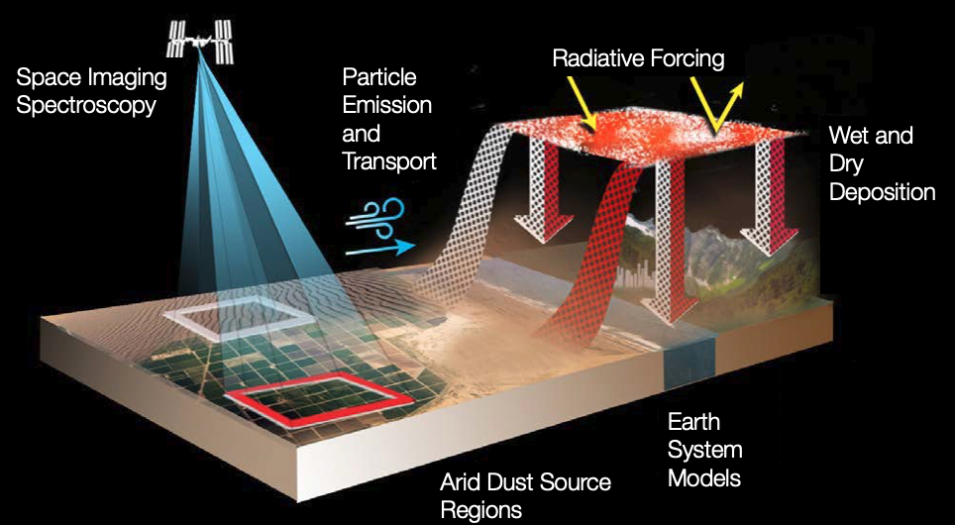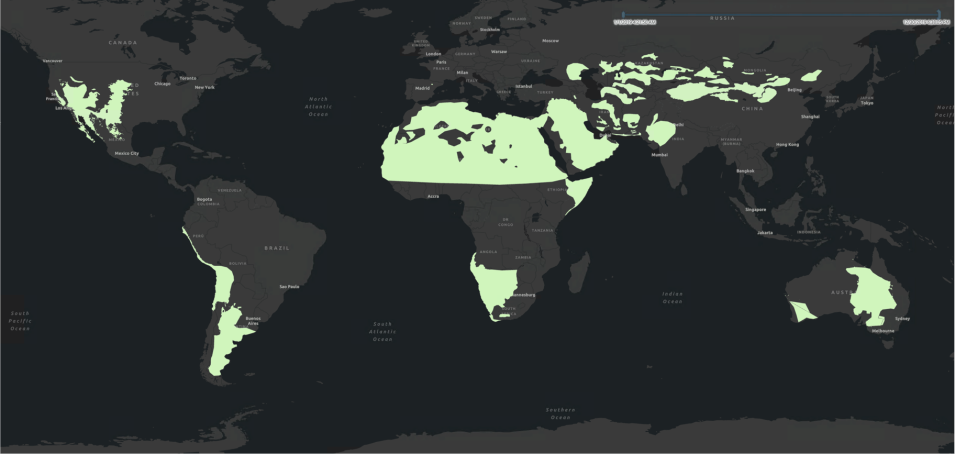Although investigating the role airborne mineral dust plays in heating or cooling Earth is the focus of the mission, its second objective is to improve scientists’ understanding of how the planet's dust cycle may change under different climate projection scenarios.
“EMIT is designed to help us answer several important questions: What is [mineral] dust made of? What kind of particles are being blown into the atmosphere? Are they light particles, dark particles, more acidic particles, more basic particles, and how will they interact with the Earth system?” Green said. “Will there be more regions of mineral dust or fewer regions, and how will that effect the climate in the future?”
The answers to such questions are significant, as they are relevant to a range of scientific disciplines.
“When there are high winds blowing across arid lands, dust is emitted into the atmosphere where it starts to interact with the Earth system,” said Green. “It immediately changes the chemistry of the atmosphere. It can play a role in how clouds are formed, and the mineral particles can scatter light back into space or they can absorb light if they're dark and heat Earth. Then, when they're deposited in terrestrial ecosystems, they can provide phytonutrients, as they do in the Brazilian rainforest. When they land in the ocean they provide nutrients for marine ecosystems and when they land on snow they can change how snow melts, which impacts water resources.”
In addition to detailing the makeup of atmospheric dust, EMIT has demonstrated another crucial capability: detecting the presence of carbon dioxide and methane super emitters. Super emitters are facilities, equipment, and other infrastructure, typically in the fossil fuel, waste, or agriculture sectors, that release high concentrations of methane. With less than a year’s worth of data, the EMIT science team has identified more than 50 such super emitters in Central Asia, the Middle East, and the Southwestern United States.
“These results are exceptional, and they demonstrate the value of pairing global-scale perspective with the resolution required to identify methane point sources, down to the facility scale,” said Dr. David Thompson, the EMIT instrument scientist and a senior research scientist at JPL. “It’s a unique capability that will raise the bar on efforts to attribute methane sources and mitigate emissions from human activities.”



